5 books about Shooting
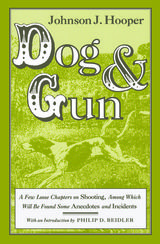
Dog and Gun
A Few Loose Chapters on Shooting, Among Which Will Be Found Some Anecdotes and Incidents
Johnson J. Hooper, with an Introduction by Philip D. Beidler
University of Alabama Press, 1992
The least well known of Johnson Jones Hooper’s works, Dog and Gun was first published as a newspaper series, then appeared in six book editions between 1856 and 1871. Hooper is Alabama’s most celebrated antebellum author, and here he gives insight into the meaning of a culture where every male hunts – and a man who shoots as a gentleman will be assumed a gentleman. Beidler’s introduction to this reprint edition explores the social, literary, and technical dimensions of Dog and Gun, which he sees as an important commentary on class distinctions in the antebellum South, as well as a straightforward treatise on hunting.
Although the book is a manual for the hunter, with characteristic humor and a certain disdain, Hooper gives a full picture of the gentlemanly sport of hunting – clearly distinct from hunting for food – in all aspects including hunter, weaponry, and sporting dogs. He takes us back to an autumnal ritual of the hunt, where one is always a boy with his first gun – to the natural mystery of quest, competition, predation, pursuit, survival, bravery, endurance, and eventual defeat, called the mystery of the hunt.
[more]
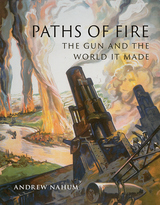
Paths of Fire
The Gun and the World It Made
Andrew Nahum
Reaktion Books, 2021
Type “Mikhail Kalashnikov” into Google and the biography of the inventor will come back to you almost at the speed of light. Squeeze the trigger of a Kalashnikov and a bullet is kicked up the barrel by an archaic chemical explosion that would have been quite familiar to Oliver Cromwell or General Custer. The gun—antique, yet contemporary—still dominates the world. Geopolitical events and even consumer culture have been molded by the often-unseen research that firearms evoked. The new science of Galileo Galilei and Isaac Newton owed much to the Renaissance study of ballistics. But research into making guns and aiming them also brought on the more recent invention of mass production and kickstarted the contemporary field of artificial intelligence. This book follows the history of the gun and its often-unsuspected wider linkages, looking from the first cannons to modern gunnery, and to the yet-to-be-realized electrical futures of rays and beams.
[more]
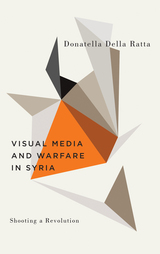
Shooting a Revolution
Visual Media and Warfare in Syria
Donatella Della Ratta
Pluto Press, 2018
From ISIS propaganda videos to popular regime-backed soap operas and digital activism, the Syrian conflict has been profoundly affected by visual media. But what are the aesthetic, political, and material implications of this disturbing collusion between war and digital culture?
Drawing on a decade of ethnographic research conducted in Syria and neighboring countries, Donatella Della Ratta examines here how the networked age shapes contemporary warfare, from conflict on the ground to the performance of violence on the screen. Her findings present a stark parallel to the digital democracy offered by techno-utopians, delving into the dark side of web 2.0 practices, where visual regimes of representation and media production are put in service of modes of destruction.
A vivid account of the politics of Syria’s visual media, from commercial television to citizen journalism and Daesh propaganda, Shooting a Revolution offers fascinating insight into the media’s role in transforming conflict zones in the digital age.
Drawing on a decade of ethnographic research conducted in Syria and neighboring countries, Donatella Della Ratta examines here how the networked age shapes contemporary warfare, from conflict on the ground to the performance of violence on the screen. Her findings present a stark parallel to the digital democracy offered by techno-utopians, delving into the dark side of web 2.0 practices, where visual regimes of representation and media production are put in service of modes of destruction.
A vivid account of the politics of Syria’s visual media, from commercial television to citizen journalism and Daesh propaganda, Shooting a Revolution offers fascinating insight into the media’s role in transforming conflict zones in the digital age.
[more]
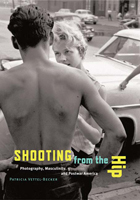
Shooting from the Hip
Photography, Masculinity, and Postwar America
Patricia Vettel-Becker
University of Minnesota Press, 2005
In Shooting from the Hip, Patricia Vettel-Becker reveals how photography helped to reconstruct and redefine the American idea of masculinity after the traumas of World War II. She argues that from 1945 to 1960 photography became increasingly concerned with restoring the male body and psyche, glorifying traditional masculinity - cowboys, boxers, athletes, military men - while treading carefully in an increasingly homophobic Cold War climate. Examining photojournalism as well as art and fashion photography, Shooting from the Hip finds in the crisp images of postwar photography five models of masculinity - the breadwinner, the action hero, the tough guy, the playboy, and the rebel. Vettel- Becker shows how the professionalization of photography itself was an attempt by male photographers to identify themselves as breadwinners. She goes on to analyze combat photography, exposing its valorization of action, subjugation of the enemy, and the use of the blurred shot to signify credibility. She links street photography - heir to Depression-era social documentary - with hard-boiled crime photography, exemplified in the works of William Klein and Weegee. And sexualized fashion models and their relationships with photographers, such as Richard Avedon and Irving Penn, fuel the ideal of the consummate playboy. Finally, Vettel-Becker demonstrates the authentic and sometimes rebellious nature of the male body as presented by sports photographers and others influenced by the Beat generation, including Robert Frank and Bruce Davidson. Taking a wide view of postwar photography, Vettel-Becker presents it as the triumph of a new form of modernist photography, centered on individual expression and the seductive image of the male body, and stimulated by a quest for the existential truth of masculinity.
[more]
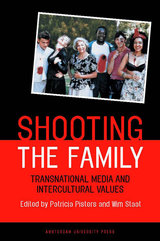
Shooting the Family
Transnational Media and Intercultural Values
Edited by Patricia Pisters and Wim Staat
Amsterdam University Press, 2005
Shooting the Family, a collection of essays on the contemporary media landscape, explores ever-changing representations of family life on a global scale. The contributors argue that new recording technologies allows families an unusual kind of freedom—until now unknown—to define and respond to their own lives and memories. Recently released videos made by young émigrés as they discover new homelands and resolve conflicts with their parents, for example, reverberate alongside the dark portrayals of family life in the formal filmmaking of Ang Lee. This book will be a boon to scholars of film theory and media studies, as well as to anyone interested in the construction of the family in a postmodern world.
[more]
READERS
Browse our collection.
PUBLISHERS
See BiblioVault's publisher services.
STUDENT SERVICES
Files for college accessibility offices.
UChicago Accessibility Resources
home | accessibility | search | about | contact us
BiblioVault ® 2001 - 2024
The University of Chicago Press









